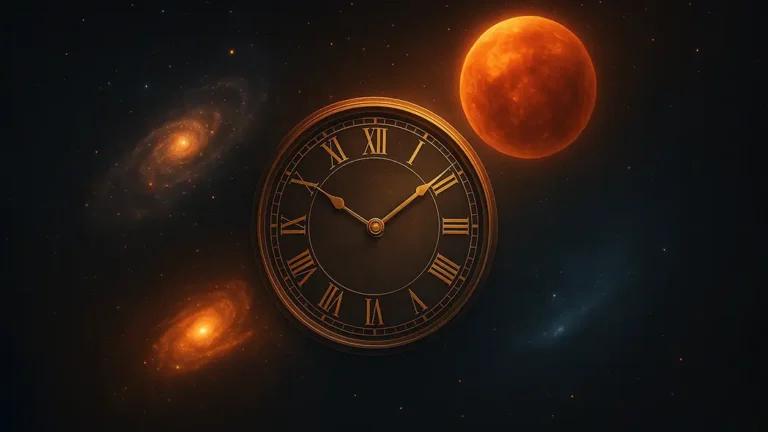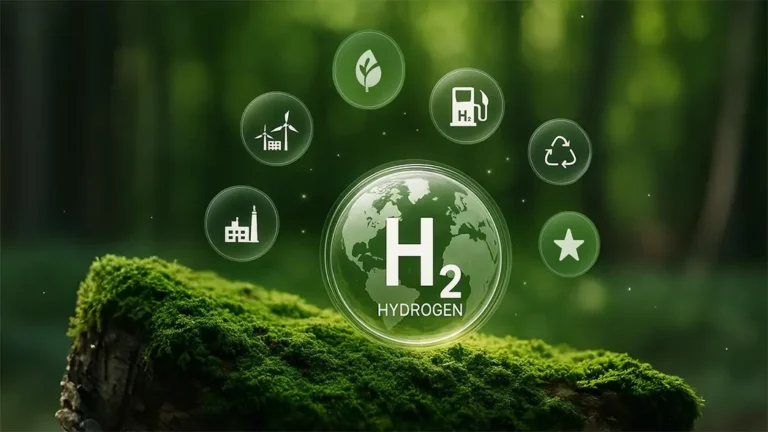When we think of hot things, we often think of fire, lava, or the Sun. But in the universe, there are objects and events far hotter than anything on Earth. Some are so hot that we can barely imagine them. The temperatures are beyond anything we deal with in daily life. So, what is the hottest thing in the universe?
Let us explore the hottest stars, explosions, and mysterious places in space to find out.
How Do Scientists Measure Heat in Space?
To understand what is the hottest thing in the universe, we first need to know how heat is measured in space. On Earth, we often use Celsius or Fahrenheit. But in space science, the temperature is measured in Kelvin. Zero Kelvin (0 K) is the coldest possible temperature. It is called absolute zero. At this point, all motion of atoms stops.
As temperatures rise, atoms and particles move faster. The hotter something is, the faster its particles move. So when scientists say something is millions or even billions of Kelvin, they mean the particles are moving at extreme speeds.
Is the Sun the Hottest Object?
The Sun is very hot. Its surface reaches about 5,500 degrees Celsius or 5,800 Kelvin. That is enough to melt anything on Earth. But that is just the surface. The center of the Sun is much hotter. The core of the Sun reaches about 15 million Kelvin. That’s where nuclear fusion happens. Fusion is what powers the Sun.

Even though the Sun is extremely hot, it is not the hottest thing in space. Many other stars and events make the Sun look cool in comparison.
Stars Hotter Than the Sun
Some stars are much hotter than our Sun. These stars are usually blue or white in color. One example is a very hot blue star called WR 102. It has a surface temperature of about 210,000 Kelvin. That’s over 35 times hotter than the Sun’s surface.

Another example is a type of star called a white dwarf. After a star like our Sun dies, it turns into a white dwarf. These stars are small but very dense and hot. Some white dwarfs can reach temperatures of 100,000 Kelvin or more when they are newly formed.
Still, stars are not the hottest things in the universe.
Supernova Explosions: One of the Hottest Events in the Universe
When large stars reach the end of their lives, they explode. These explosions are called supernovae. A supernova can outshine an entire galaxy for a short time. During the explosion, temperatures can reach several billion Kelvin.
This is because the core of the star collapses, and all the energy rushes out. The heat created is almost beyond belief. It’s hard to find anything hotter in normal conditions.
However, even a supernova is not the hottest thing we know.
Neutron Star Collisions: Reaching a Trillion Kelvin
After a supernova, sometimes a neutron star is left behind. This is one of the densest objects in the universe. It is made mostly of neutrons, which are tiny particles inside atoms.
When two neutron stars collide, the energy released is enormous. The temperatures during the collision can reach up to one trillion Kelvin (1,000,000,000,000 K). That’s thousands of times hotter than the Sun’s core.
These events are rare but very powerful. They can create heavy elements like gold and platinum. They also send out gravitational waves, which scientists can detect here on Earth.
Still, these are not the hottest temperatures ever recorded.
The Hottest Natural Temperature Ever Seen
Now let’s talk about the hottest natural temperature ever seen in the universe. It happened in the middle of a supernova called SN 2006gy. Scientists believe this explosion reached temperatures of more than 10 billion Kelvin. That’s 10,000,000,000 K.
At this level of heat, atoms break apart. Even the center of atoms, called the nucleus, can’t stay together. The particles inside the nucleus fly free. This state of matter is called plasma, and at high enough temperatures, it becomes a quark-gluon plasma. We’ll talk more about that next.
What Is a Quark-Gluon Plasma?
Everything we see is made of atoms. Inside atoms are protons and neutrons. Inside those are even smaller particles called quarks. Quarks are held together by particles called gluons.
At extremely high temperatures, protons and neutrons can no longer hold themselves together. Quarks and gluons break free and float around in a super-hot soup. This is called quark-gluon plasma.
Scientists think the universe was full of this plasma right after the Big Bang. That was more than 13 billion years ago.
To study this state, scientists created a special machine called a particle collider.
The Hottest Temperature Ever Created by Humans
In 2012, scientists at the Large Hadron Collider (LHC) in Europe smashed gold atoms together. This happened at nearly the speed of light. When they collided, the temperature reached 5.5 trillion Kelvin. That’s 5,500,000,000,000 K.
This is the hottest temperature ever made in a lab. It is much hotter than the core of any star or any explosion we have seen. For a very short time, the collider created quark-gluon plasma—the same stuff that was present after the Big Bang.
At this heat, normal matter cannot exist. Only free quarks and gluons can survive.
So, when we ask what is the hottest thing in the universe, this lab-made event is at the top.

Can Anything Get Hotter?
In theory, there is something called the Planck temperature. It is the highest temperature possible based on the laws of physics. This temperature is around 1.4 x 10³² Kelvin. That’s a number with 32 zeros after it. It’s way beyond anything we can reach.
We think the universe may have reached this temperature in the very first moment after the Big Bang. But we do not have a way to test or see it directly.
A Quick List of Hot Temperatures in Space
Let’s compare some of the hottest known temperatures:
| Object/Phenomenon | Temperature (Kelvin) |
|---|---|
| Sun’s surface | 5,800 K |
| Sun’s core | 15 million K |
| Blue hypergiant WR 102 | 210,000 K |
| Young white dwarfs | 100,000+ K |
| Supernova explosion | Up to 10 billion K |
| Neutron star collision | 1 trillion K |
| Large Hadron Collider (human-made) | 5.5 trillion K |
As you can see, human-made experiments have produced the hottest temperature ever recorded.
Why Does It Matter?
You might wonder—why should we care about such high temperatures? These extreme conditions help us understand the birth of the universe. They show us how matter behaves when it breaks down to its most basic parts.
Also, by recreating these conditions in labs, scientists can learn about particles, forces, and the universe’s earliest moments. This research helps build new technologies and teaches us how everything around us began.
Final Thoughts
So, what is the hottest thing in the universe?
- In nature, it might be the collision of neutron stars, reaching trillions of Kelvin.
- In labs, the quark-gluon plasma created at the LHC holds the record at 5.5 trillion Kelvin.
- And in theory, the Planck temperature is the absolute limit.
These extreme temperatures remind us of how wild and powerful the universe can be. They also show how far science has come in understanding things we can’t even touch or see with our own eyes.
As we continue to explore, we may discover even hotter places or events. Until then, quark-gluon plasma remains the champion of cosmic heat.




